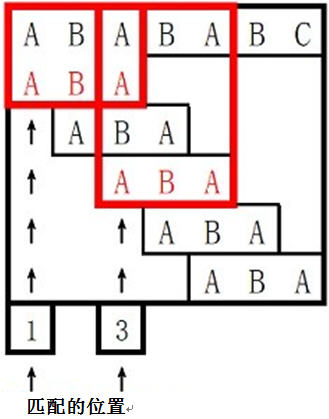目录
比较详细注释和图解请看KMP——字符串匹配-CSDN博客,(点击链接可跳转)一看就会
7-1 括号匹配
给定一串字符,不超过100个字符,可能包括括号、数字、字母、标点符号、空格,编程检查这一串字符中的( ) ,[ ],{ }是否匹配。
输入格式:
输入在一行中给出一行字符串,不超过100个字符,可能包括括号、数字、字母、标点符号、空格。
输出格式:
如果括号配对,输出yes,否则输出no。
输入样例1:
sin(10+20)
输出样例1:
yes
输入样例2:
{[}]
输出样例2:
no#include<stdio.h>
char stack[10086];
int top=-1;
void push(char x)
{
stack[++top]=x;
}
int pop()
{
if(top==-1)
return 0;
else
return stack[top--];
}
int peidui(char str[])
{
int i;
int len=strlen(str);
while(str[i]!='\0')
{
if(str[i]=='('||str[i]=='['||str[i]=='{')
push(str[i]);
else if(str[i]==')'||str[i]==']'||str[i]=='}')
{
if(top==-1||str[i]-pop()>2)
return 0;
}
i=i+1;
}
return(top==-1);
}
int main()
{
char str[10086];
fgets(str,sizeof(str),stdin);
if(peidui(str))
printf("yes");
else
printf("no");
return 0;
}7-2 后缀式求值
我们人类习惯于书写“中缀式”,如 3 + 5 * 2 ,其值为13。 (p.s. 为什么人类习惯中缀式呢?是因为中缀式比后缀式好用么?)
而计算机更加习惯“后缀式”(也叫“逆波兰式”,Reverse Polish Notation)。上述中缀式对应的后缀式是: 3 5 2 * +
现在,请对输入的后缀式进行求值。
输入格式:
在一行中输入一个后缀式,运算数和运算符之间用空格分隔,运算数长度不超过6位,运算符仅有+ - * / 四种。
输出格式:
在一行中输出后缀式的值,保留一位小数。
输入样例:
3 5.4 2.2 * +
输出样例:
14.9#include<stdio.h>
int main()
{
char str[10086];
double st[10086];
int i=0;
while(scanf("%s",str)!=EOF)
{
if(str[1]=='\0'&&(str[0]=='+'||str[0]=='-'||str[0]=='*'||str[0]=='/'))
{
double num1,num2,current;
num1=st[--i];
num2=st[--i];
switch(str[0])
{
case'+':current=num2+num1;st[i++]=current;break;
case'-':current=num2-num1;st[i++]=current;break;
case'*':current=num2*num1;st[i++]=current;break;
case'/':current=num2/num1;st[i++]=current;break;
}
}
else
{
double num;
sscanf(str,"%lf",&num);
st[i++]=num;
}
}
printf("%.1f",st[0]);
return 0;
}7-3 表达式转换
算术表达式有前缀表示法、中缀表示法和后缀表示法等形式。日常使用的算术表达式是采用中缀表示法,即二元运算符位于两个运算数中间。请设计程序将中缀表达式转换为后缀表达式。
输入格式:
输入在一行中给出不含空格的中缀表达式,可包含+、-、*、/以及左右括号(),表达式不超过20个字符。
输出格式:
在一行中输出转换后的后缀表达式,要求不同对象(运算数、运算符号)之间以空格分隔,但结尾不得有多余空格。
输入样例:
2+3*(7-4)+8/4
输出样例:
2 3 7 4 - * + 8 4 / +#include<stdio.h>
#include<string.h>
void print()
{
static int flag=0;
if(flag!=0)
putchar(' ');
flag++;
}
int main()
{
char stack[10086];
char str[10086];
int top=-1,i;
gets(str);
int len=strlen(str);
for(i=0;i<len;i++)
{
if((str[i]=='+'||str[i]=='-')&&(i==0||str[i-1]=='(')||isdigit(str[i]))
{
print();
if(str[i]!='+')
putchar(str[i]);
while(str[i+1]=='.'||isdigit(str[i+1]))
putchar(str[++i]);
}
else
{
if(str[i]==')')
{
while(top!=-1&&stack[top]!='(')
{
print();
putchar(stack[top--]);
}
if(top!=-1)
{
top--;
}
}
else
{
if(top==-1)
{
stack[++top]=str[i];
}
else
{
while(top>-1&&stack[top]!='(')
{
if(str[i]=='('||((str[i]=='*'||str[i]=='/')&&(stack[top]=='+'||stack[top]=='-')))
{
break;
}
print();
putchar(stack[top--]);
}
stack[++top]=str[i];
}
}
}
}
while(top>-1)
{
if(stack[top]=='(')
top--;
else
print();
putchar(stack[top--]);
}
return 0;
}7-4 【模板】KMP字符串匹配
比较详细注释和图解请看KMP——字符串匹配-CSDN博客,(点击链接可跳转)一看就会
给出两个字符串text和pattern,其中pattern为text的子串,求出pattern在text中所有出现的位置。
为了减少骗分的情况,接下来还要输出子串的前缀数组next。
输入格式:
第一行为一个字符串,即为text。
第二行为一个字符串,即为pattern。
输出格式:
若干行,每行包含一个整数,表示pattern在text中出现的位置。
接下来1行,包括length(pattern)个整数,表示前缀数组next[i]的值,数据间以一个空格分隔,行尾无多余空格。
输入样例:
ABABABC
ABA
输出样例:
1
3
0 0 1
样例说明:

#include<stdio.h>
#include<string.h>
int main()
{
char a[1000010],b[1000010];
int next[1000010];
scanf("%s %s",a+1,b+1);
int m=strlen(a+1),n=strlen(b+1);
int i,j=0;
for(i=2;i<=n;i++)
{
while(j&&b[i]!=b[j+1])
{
j=next[j];
}
if(b[i]==b[j+1])
{
j++;
}
next[i]=j;
}
j=0;
for(i=1;i<=m;i++)
{
while(j&&a[i]!=b[j+1])
{
j=next[j];
}
if(a[i]==b[j+1])
j++;
if(j==n)
{
printf("%d\n",i-n+1);
j=next[j];
}
}
for(i=1;i<=n;i++)
{
if(i==n)
printf("%d",next[i]);
else
printf("%d ",next[i]);
}
return 0;
}7-5 约瑟夫环(押题,重要)
N个人围成一圈顺序编号,从1号开始按1、2、3......顺序报数,报p者退出圈外,其余的人再从1、2、3开始报数,报p的人再退出圈外,以此类推。
请按退出顺序输出每个退出人的原序号。
输入格式:
输入只有一行,包括一个整数N(1<=N<=3000)及一个整数p(1<=p<=5000)。
输出格式:
按退出顺序输出每个退出人的原序号,数据间以一个空格分隔,但行尾无空格。
输入样例:
在这里给出一组输入。例如:
7 3
输出样例:
3 6 2 7 5 1 4#include<stdio.h>
#include<string.h>
void print()
{
static int flag=0;
if(flag!=0)
putchar(' ');
flag++;
}
int main()
{
char stack[10086];
char str[10086];
int top=-1,i;
gets(str);
int len=strlen(str);
for(i=0;i<len;i++)
{
if((str[i]=='+'||str[i]=='-')&&(i==0||str[i-1]=='(')||isdigit(str[i]))
{
print();
if(str[i]!='+')
putchar(str[i]);
while(str[i+1]=='.'||isdigit(str[i+1]))
putchar(str[++i]);
}
else
{
if(str[i]==')')
{
while(top!=-1&&stack[top]!='(')
{
print();
putchar(stack[top--]);
}
if(top!=-1)
{
top--;
}
}
else
{
if(top==-1)
{
stack[++top]=str[i];
}
else
{
while(top>-1&&stack[top]!='(')
{
if(str[i]=='('||((str[i]=='*'||str[i]=='/')&&(stack[top]=='+'||stack[top]=='-')))
{
break;
}
print();
putchar(stack[top--]);
}
stack[++top]=str[i];
}
}
}
}
while(top>-1)
{
if(stack[top]=='(')
top--;
else
print();
putchar(stack[top--]);
}
return 0;
}7-6 单调栈(新题,有注释详解)
给定一个长度为 N 的整数数列,输出每个数左边第一个比它小的数,如果不存在则输出 −1。
输入格式:
第一行包含整数 N,表示数列长度。
第二行包含 N 个整数,表示整数数列。
输出格式:
共一行,包含 N 个整数,其中第 i 个数表示第 i 个数的左边第一个比它小的数,如果不存在则输出 −1。
数据范围:
1≤N≤105
1≤数列中元素≤109
输入样例:
在这里给出一组输入。例如:
5
3 4 2 7 5
输出样例:
在这里给出相应的输出。例如:
-1 3 -1 2 2 //此题要求解出每个数左边第一个比它小的数
//我们把左边已经输入的数存放到一个栈中,因为栈的特性是后进先出
#include<iostream>
using namespace std;
const int N=100010;
int n;
int stk[N],tt;
int main()
{
int n;
scanf("%d",&n);
for(int i=0;i<n;i++)
{
int x;
scanf("%d",&x);
while(tt&&stk[tt]>=x)
{
tt--;//tt不为0,且stk[tt]>=x,也就是stk里面这个数大于目标值,他不应该在里面,弹出即可
}
if(tt) printf("%d ",stk[tt]);//如果上述条件都满足了,那说明stk里面的值就是第一个小于x的值,输出
else printf("-1 ");//如果都弹出去完了,tt为0了,也就说明stk里面为空,空的话就不用就一定没有,输出-1
stk[++tt]=x;//然后将x放进栈中
}
return 0;
}






















 659
659

 被折叠的 条评论
为什么被折叠?
被折叠的 条评论
为什么被折叠?








